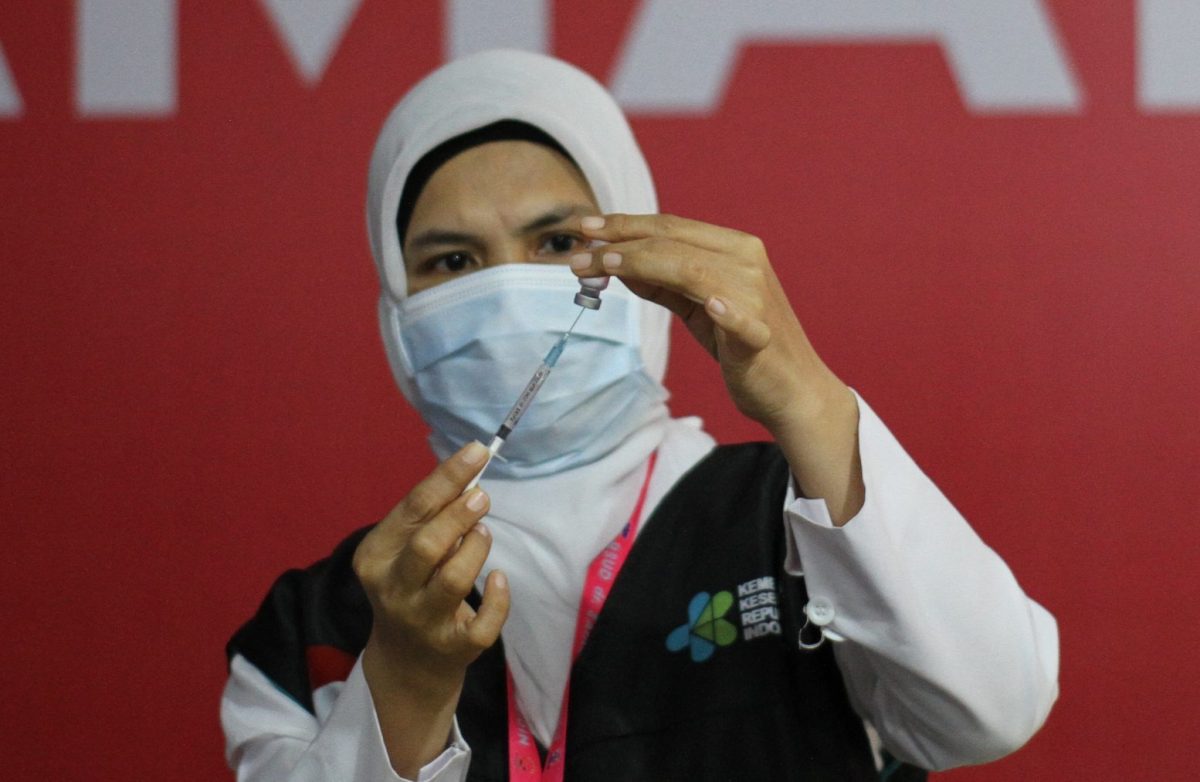[ad_1]
The next couple of weeks will be critical as key Southeast Asian states will catch up with neighbors and peers in the rollout of Covid-19 vaccines. China is expected to play a big role in these vaccination drives.Â
With three countries acquiring Chinese-made vaccines in their initial inoculation campaigns and two likely to follow suit in the coming days, Chinese vaccine diplomacy in Southeast Asia is on full display.
The first batch of 200,000 doses from Sinovac arrived in Bangkok on Wednesday and vaccination is set to commence next week. Likewise, a donation of 600,000 doses from Sinovac is expected to arrive in Manila on Sunday, signaling the start of the Philippines’ vaccination program.
Hence, if all goes well, Thailand and the Philippines will be joining Indonesia, Laos and Cambodia – five of the 10 members of the Association of Southeast Asian Nations – to begin mass inoculation campaigns using Chinese vaccines.Â
More than a vote of confidence for Chinese vaccine developers, this also signals the ASEAN region’s tacit recognition of China as a reliable partner in the fight against the pandemic. The success of these campaigns will likely enhance Beijing’s appeal in the region.
Indonesia deployed Sinovac’s Coronavac in a celebrated rollout last month, while Laos and Cambodia used Sinopharm’s vaccines in their own rollouts on January 27 and February 10 respectively. Brunei, this year’s ASEAN chair, also received donations of Sinopharm vaccines this month.Â
Getting the two most populous countries in the region with the highest number of Covid-19 cases – Indonesia and the Philippines – to use its vaccines is a big win for China. To date, Indonesia remains the largest foreign buyer of Chinese vaccines. Indonesian state-owned vaccine producer PT Bio Farma also obtained rights to produce 50 million doses of Sinovac at home.
Last month, President Joko Widodo became the first major world leader to receive a Chinese vaccine shot publicly during the visit of Chinese Foreign Minister Wang Yi to Jakarta. It marked the start of the mass vaccination campaign for the ASEAN region’s largest economy.Â
But the repeat of a Widodo act is unlikely in the Philippines, as President Rodrigo Duterte’s advanced age exempts him from taking the Chinese shot based on the assessment of his country’s regulatory agency.
Compared with other vaccine rollouts, the Philippine case will be unique for not prioritizing health-care workers. The country’s Food and Drug Administration did not recommend the use of Sinovac for the country’s medical front-liners and the elderly because of its varying efficacy levels.
While it made good showing in trials in Turkey and Indonesia (91.25% and 65.3% respectively), it made suboptimal showing (50.4%) in trials done among health-care workers in Brazil.Â
Although Sinovac is just the third player to get an emergency-use authorization in the Philippines after Oxford-AstraZeneca and Pfizer-BioNTech, the company may have the first crack in the country’s vaccination drive set to start before month-end.
More than 100,000 doses of Pfizer BioNtech that were supposed to arrive in the middle of February were delayed by logistical challenges and indemnification issues.
The fallout from the Dengvaxia controversy in the Philippines involving French pharma giant Sanofi not only undermined public confidence in vaccines, but also had a chilling effect on foreign private drug firms. Hence exemption from liabilities arising from adverse effects of the vaccine has been a sticking point in negotiations.
Hurdles in this procurement made via COVAX (Covid-19 Vaccines Global Access program) paved the way for Chinese vaccine donations to get ahead of the queue.
The Philippines is pulling all levers to corner a piece of the coveted global vaccine market. Overtures with non-traditional partners make it a high priority for Chinese and Russian vaccine grants and advance orders.
India’s Bharat Biotech is also applying to be the fourth company to get an emergency-use approval to distribute vaccines to the country of more than 110 million. Access to vaccines has also been raised as a possible condition for renegotiating a two-decade-old military pact with the Philippines’ traditional ally the United States.
Manila is also leveraging its huge overseas health-care workforce, relaxing curbs on the deployment of Filipino nurses to Europe in return for access to British- and German-made vaccines.Â
In the scramble for scarce global supplies, Chinese vaccine donations and early shipments to Southeast Asian countries certainly bolster Beijing’s credentials as a responsible big neighbor. This said, regional countries are not pinning all their hopes on Beijing. While they certainly welcome China’s initiative, they continue to procure from other providers – American, European and Russian – and work with the global COVAX facility.
Malaysia, which began its vaccination program on Wednesday, made use of Pfizer-BioNTech, while the first shipment of more than 117,000 doses from Oxford-AstraZeneca arrived in Vietnam on the same day, with a rollout expected early next month.
To avoid overexposure to China, Myanmar used Indian-donated Covishield (Oxford-AstraZeneca) in its initial vaccinations last month. Most regional countries placed orders for Oxford-AstraZeneca and Pfizer-BioNTech, with a few also signing up for Moderna, Novavax and Russia’s Gamaleya.Â
Not wanting to be left behind and eager to end the waiting game, Southeast Asian countries have shown pragmatism in their vaccination drives. The first shipment to come gets to be rolled out first, while they continue to negotiate with manufacturers and international partners to get more supplies.
China’s early recovery, its manufacturing might and its proximity logistics-wise make it well poised to engage in vaccine diplomacy, deepening its influence in a critical periphery.Â
[ad_2]
Source link













